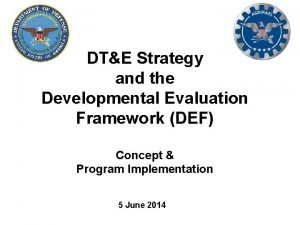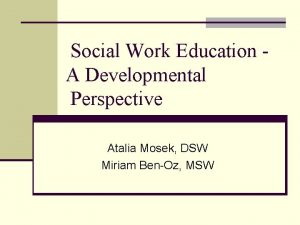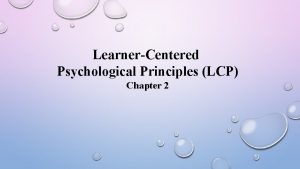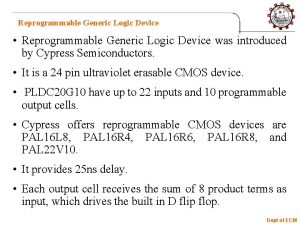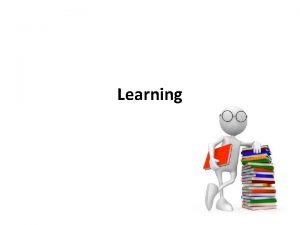Logic Model Generic Social Developmental Evaluation Styles Generic







- Slides: 7

Logic Model Generic Social Developmental Evaluation Styles Generic Learning Digital Triangulation Public Engagement with Research Unit University of Southampton

Generic Social • Clearly identifying the core purpose/outcome of your activity • Developing an evaluative question to reflect this core purpose by thinking about what participants and staff would do, think and say if the project outcome has been met • Think of questions that are open (do not invite a yes/no answer) and that give respondents scope to say what is important to them • Adapt your methods of data collection to the audience, e. g. if working with children, visual methods might be more effective than a questionnaire Home

Logic Model • Inputs (what is required to achieve aims) • Activities (what the project does with the resources) • Outputs • Short-term outcomes • Longer-term outcomes • Measurement • Tools Home

Digital • • • Photographs Video diaries Blogs Audio recording Podcasting Mobile phones (texting, apps, etc. ) Internet platforms Web polls Email Home

Developmental • Innovation • Radical redesign • Replication • Complex issues • Crises Home

Generic Learning • Knowledge and understanding • Skills • Behaviour and progression • Enjoyment • Inspiration • Creativity • Attitudes and values Home

Triangulation • Using different methods to collect information • Asking different people the same thing, to gain a well-rounded perspective of evaluation • Mixture of quantitative and qualitative methods (e. g. surveys, focus groups, observation, questionnaires, tracked attendance figures etc. ) • Bring together different theoretical approaches to interpret the outcomes of research • Can also describe the work of several researchers combining their observations of the same evidence during the same time (e. g. a gallery observation by a team) • Mix of both primary and secondary evidence • Can help to protect against built-in bias within evaluation methods • Avoids reliance on the written or spoken word, which can be a barrier for some participants (part of the 'Mosaic Approach') Home
 Parents evaluation of developmental status
Parents evaluation of developmental status Developmental evaluation framework
Developmental evaluation framework Developmental perspective social work
Developmental perspective social work What are the factors of lcp
What are the factors of lcp First order logic vs propositional logic
First order logic vs propositional logic First order logic vs propositional logic
First order logic vs propositional logic First order logic vs propositional logic
First order logic vs propositional logic Combinational logic circuit vs sequential
Combinational logic circuit vs sequential

